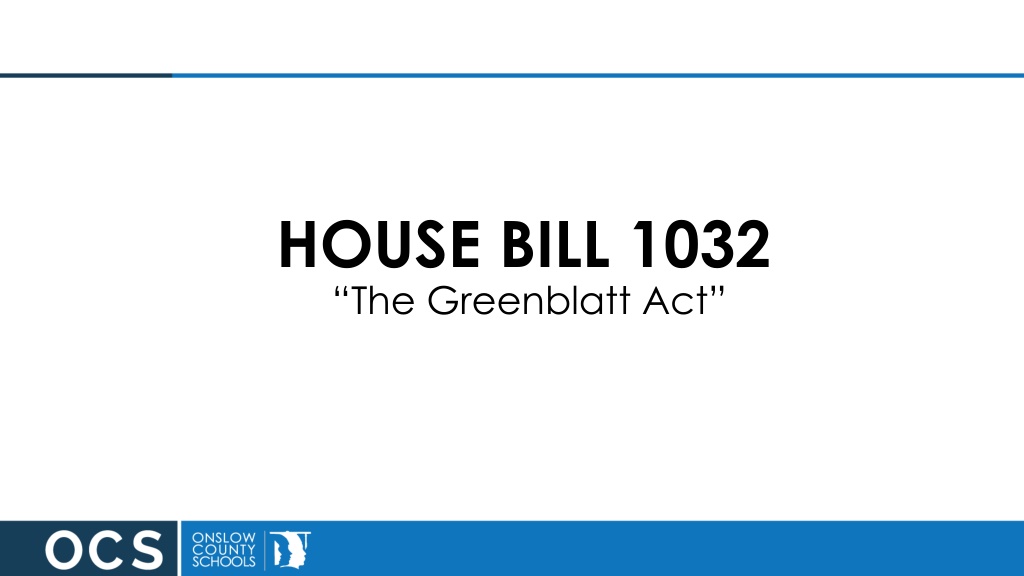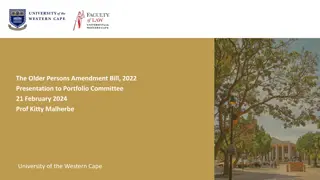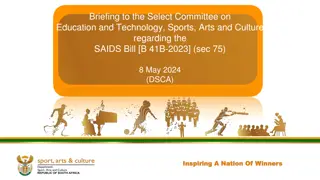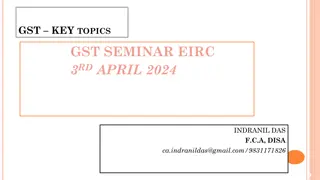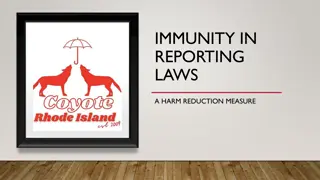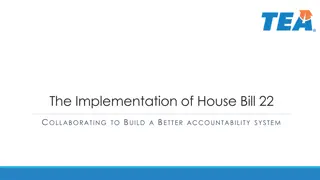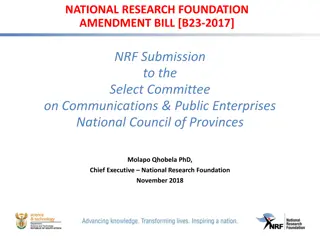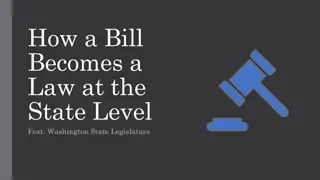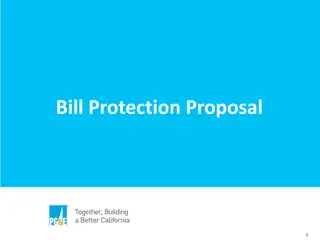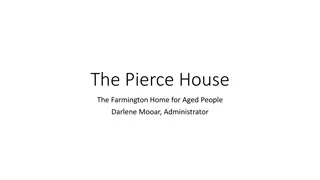HOUSE BILL 1032
Physical and mechanical restraint of students is regulated by HB 1032 - The Greenblatt Act. The act specifies permissible circumstances for using restraint by school personnel and law enforcement officers, while prohibiting its use as a disciplinary consequence. Understanding the restrictions and allowances set forth in the law is essential for ensuring the safety and well-being of students in educational settings.
Download Presentation

Please find below an Image/Link to download the presentation.
The content on the website is provided AS IS for your information and personal use only. It may not be sold, licensed, or shared on other websites without obtaining consent from the author.If you encounter any issues during the download, it is possible that the publisher has removed the file from their server.
You are allowed to download the files provided on this website for personal or commercial use, subject to the condition that they are used lawfully. All files are the property of their respective owners.
The content on the website is provided AS IS for your information and personal use only. It may not be sold, licensed, or shared on other websites without obtaining consent from the author.
E N D
Presentation Transcript
HOUSE BILL 1032 The Greenblatt Act
Physical Restraint as defined by HB 1032 Definition Definition Physical restraint means the use of physical force to restrict the free movement of all or a part of a student s body. N.C. Gen. Stat. 115C-391.1(b)(8)(House Bill 1032). See full size image Holding a student in a chair. See full size image See full size image Pinning a student against the wall to prevent them from moving. Grabbing a student by the arm and pulling them in a specific direction. Physically holding a student by wrapping arms around their body and taking them to the floor.
Physical Restraint of a Student by School Personnel is Permissible Only in the Following Circumstances 1. 1. as reasonably needed to obtain possession of weapons or other dangerous objects on the person, or within the control of a student; 2 2. as reasonably needed to maintain order or to prevent or break up a fight; 3. 3. as reasonably needed for self-defense; 4. 4. as reasonably needed to ensure the safety of any student, employee, volunteer, or other person present; 5. 5. as reasonably needed to teach a skill, to calm or comfort a student, or to prevent self- injurious behavior; 6. 6. as reasonably needed to escort a student safely from one area to another; 7. 7. if used as provided for in an IEP, Section 504, or behavior intervention an; or 8. 8. as reasonably needed to prevent imminent destruction to school or another person s property. Reasonable Use of Force N.C. Gen. Stat. N.C. Gen. Stat. 115C 115C- -391.1(c)(1)(House Bill 1032). 391.1(c)(1)(House Bill 1032).
What does all this mean? Physical restraint of students shall not be considered a reasonable use of force and its use is prohibited. N.C. Gen. Stat. N.C. Gen. Stat. 115C 115C- -391.1(c)(2)(House Bill 1032) 391.1(c)(2)(House Bill 1032) Physical restraint of students shall not be considered a reasonable use of force when used solely as a disciplinary consequence. N.C. Gen. Stat. N.C. Gen. Stat. 115C 115C- -91.1(c)(3)(House Bill 1032) 91.1(c)(3)(House Bill 1032) Physical restraint by law enforcement officers in the lawful exercise of their law enforcement duties is not prohibited.N.C. Gen. Stat. N.C. Gen. Stat. 115C 115C- -391.1(c)(4)(House Bill 1032) 391.1(c)(4)(House Bill 1032) Bottom Line: The use of physical restraint is prohibited except in the situations described in this law.
Mechanical Restraint as defined by HB 1032 Definition Definition Mechanical restraint means the use of any device or material attached or adjacent to a student s body that restricts freedom of movement or normal access to any portion of the student s body and that the student cannot easily remove. 180px-Plasticcuff2 Handcuffs N.C. Gen. Stat. 115C-391.1(b)(7)(House Bill 1032). Prone_Stander_(RIF)_8043 Placed in a prone stander safeGuard_top Placed in a seatbelt
Mechanical Restraint of a Student by School Personnel is Permissible Only in the Following Circumstances 1. when properly used as assistive technology device included in the student s IEP, Section 504, Behavior Intervention Plan, or as otherwise prescribed by a medical or related service provider; 2. when using seat belts or other safety restraints to secure students during transportation; 3. as reasonably needed to obtain possession of weapons or other dangerous objects on the person or within the control of a person; 4. as reasonably needed for self-defense; 5. as reasonably needed to ensure the safety of any student, employee, volunteer, or other person. N.C. Gen. Stat. N.C. Gen. Stat. 115C 115C- -391.1(d)(1)(1)(House Bill 1032) 391.1(d)(1)(1)(House Bill 1032)
What does all this mean? mechanical restraint, including the tying, taping, or strapping down of a student shall not be considered to be a reasonable use of force and its use is prohibited. N.C. Gen. Stat. N.C. Gen. Stat. 115C 115C- -391.1(d)(1)(2)(House Bill 1032). 391.1(d)(1)(2)(House Bill 1032). Mechanical restraint, such as the use of restraint devices like handcuffs by law enforcement officers in the lawful exercise of their law enforcement duties is not prohibited. N.C. Gen. Stat. N.C. Gen. Stat. 115C 115C- -391.1(d)(3) (House Bill 1032). 391.1(d)(3) (House Bill 1032). Bottom Line: The use of mechanical restraint is prohibited except in the situations described in this law.
Seclusion as defined by HB1032 Definition Definition Placed in a seclusion Room or a room alone Seclusion means the confinement of a student alone in an enclosed space from which the student is (a) physically prevented from leaving or 3019511710_1be6f986de_m (b) incapable of leaving due to physical or intellectual capacity. ( Disability AU, MR, and TBI )N.C. Gen. Stat. 115C- 391.1(b)(10)(House Bill 1032).
Seclusion of a Student by School Personnel is Permissible Only in the Following Circumstances 1. as reasonably needed to respond to a person in control of a weapon or other dangerous object; 2. as reasonably needed to maintain order or prevent or break up a fight; 3. as reasonably needed for self-defense; 4. as reasonably needed when a student s behavior poses a threat of imminent physical harm to self or others or imminent substantial substantial destruction of school or another person s property; 5. When used as specified in the student s IEP, Section 504, Behavior Intervention Plan; and student is constantly monitored by an adult in close proximity who is able to see and hear the student at all times; the student is released from seclusion upon cessation of the behaviors that led to the seclusion or as otherwise specified in IEP, 504, or behavior intervention plan; the confining space has been approved for such use by the local education agency; the space is appropriately lighted, ventilated and heated or cooled; and the space is free from objects that unreasonably expose the student or others to harm. N.C. Gen. Stat. 115C-391.1(e)(1)(House Bill 1032).
What does all this mean? the use of seclusion is not considered to be reasonable force and its use is not permitted. N.C. Gen. Stat. N.C. Gen. Stat. 115C 115C- -391.1(e)(1)(House Bill 1032) 391.1(e)(1)(House Bill 1032) The use of seclusion is not a reasonable use of force when used solely as a disciplinary consequence. N.C. Gen. Stat. N.C. Gen. Stat. 115C 115C- -391.1(e)(2) 391.1(e)(2) (House Bill 1032) (House Bill 1032) The use of seclusion by law enforcement officers in the lawful exercise of their law enforcement duties is not prohibited. N.C. Gen. Stat. N.C. Gen. Stat. 115C 115C- -391.1(e)(4)(House Bill 1032). 391.1(e)(4)(House Bill 1032). Bottom Line: The use of seclusion is prohibited except in the situations described in this law.
Isolation as defined by HB 1032 Behavior Management Technique Definition Definition Isolation means a behavior management technique in which a student is placed alone in an enclosed space from which the student is not prevented from leaving. Placed in isolation N.C. Gen. Stat. 115C-391.1(b)(5) (House Bill 1032).
What does all this mean? Isolation is permitted as a behavior management technique provided that: Isolation is permitted as a behavior management technique provided that: 1. the isolation space is appropriately lighted, ventilated and heated or cooled; 2. the duration of the isolation is reasonable in light of the purpose for the isolation; 3. the student is reasonably monitored; and 4. the isolation space is free from objects unreasonably expose the student or others to harm. N.C. Gen. Stat. 115C-391.1(f)(House Bill 1032). Bottom Line: That the use of isolation is permitted as long as the space utilized meets the requirements.
What about Time-Out? Definition Definition Time-out means a behavior management technique in which a student is separated from other students for a limited period of time in a monitored setting. N.C. Gen. Stat. 115C-391.1(b)(11)(House Bill 1032). Behavior Management Technique Bottom Line: That the use of time-out is permitted.
Aversive Procedures as defined by HB 1032 Definition Definition Aversive procedure means a systematic physical or sensory intervention program for modifying the behavior of a student with a disability which causes or reasonably may be expected to cause on or more of the following: 1. Significant physical harm, such as tissue damage, physical illness, or death; 2. Serious, foreseeable long-term psychological impairment; 3. Obvious repulsion on the part of observers who cannot reconcile such extreme procedures with acceptable standard practice, for example: electric shock applied to the body; extremely loud auditory stimuli; forcible introduction of foul substances to the mouth, eyes, ears, nose or skin; placement in a tub of cold water or shower; slapping, pinching, hitting or pulling hair; blindfolding or other forms of visual blocking; unreasonable withholding of meals; eating one s own vomit; or denial of reasonable access to toileting facilities. N.C. Gen. Stat. 115C-391.1(b)(2)(House Bill 1032) Aversive Procedures
What does all this mean? The use of aversive procedures in public schools is prohibited. (requires immediate reporting urgent action!) N.C. Gen. Stat. N.C. Gen. Stat. 115C 115C- -391.1(h)(House Bill 1032) 391.1(h)(House Bill 1032) Bottom Line: That the use of aversive procedures is prohibited.
Training Component required by HB1032 Annual training/notification of staff about HB 1032 Training in appropriate use of seclusion/restraint In Onslow Non-violent Crisis Intervention- CPI Annual Certification required of all EC staff, all first responders and crisis team members
Limitations on Liability provided by HB 1032 Nothing in N.C. Gen. Stat. 115C-391.1(j)(5) (House Bill 1032) shall be construed to create a private cause of action against any local board of education, its agents or employees, or any institutions of teacher education or their agents or employees or to create a criminal offense. N.C. Gen. Stat. Gen. Stat. 115C 115C- -391.1(k)(House Bill 1032) 391.1(k)(House Bill 1032) Notwithstanding any other law, no officer or employee of a local board of education shall be held civilly liable for using reasonable force, in conformity with State law, State or local rules, or State or local policies regarding the control, discipline, suspension, and expulsion of students. Furthermore, the burden of proof is on the claimant to show that the amount of force used was not reasonable. N.C. Gen. Stat. N.C. Gen. Stat. 115C 115C- -391(h)(House Bill 1032) 391(h)(House Bill 1032) N.C.
Notice, Reporting, and Documentation Requirements Required Documentation Notebook Log Form Completed immediately Debriefing with team Information provided to parent (call?) Student record, subject to FERPA Recording Aversive Incidences (Administrator, EC Director, PowerSchool, State Board) Monitoring Activities by Disability Rights
